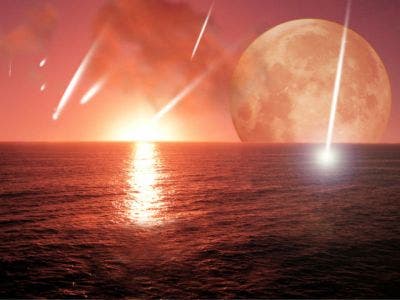Some species of bacteria can survive virtually anywhere: in acids, in nuclear waste, at extremely low or high temperatures, at extreme pressures, and so on; extreme microbes that survive on gases thrown out by Siberian hot springs may have played an extremely important role in the formation of our planet’s atmosphere and its composition, a new study concludes.
Extreme exotic microbes
Living now only in isolated places, in only (for them) a few oases, these little guys were once all over the place, and in fact, you can even say that they ruled the Earth, in its early period. What is absolutely stunning about them is that they feed on carbon monoxide, but they also eliminate carbon monoxide, which at a first glance seems to make no sense whatsoever. The microbes called anaerobic carboxydotrophs were found in the Kamceatka Peninsula in Siberia, and researchers were surprised to see that a lot of the carbon monoxide in the area wasn’t produced by hot volcanic gases, but it was in fact produced by the microbes.
“We targeted geothermal fields,” University of Chicago geophysicist Albert Colman said, “believing that such environments would prove to be prime habitat for carboxydotrophs due to the venting of chemically reduced, or in other words, oxygen-free and methane-, hydrogen-, and carbon dioxide-rich volcanic gases in the springs.”
Why is this important ? Well, the processing of carbon monoxide has huge implications for the air’s composition billions of years ago, in a time called the Archaean.
The early atmosphere

It is belived that in the Archaean, the atmosphere contained an almost insignificant amount of oxygen, and was filled instead with large amounts of carbon dioxide and possibly methane. After that, an event called the Great Oxidation occured, about 2.3-2.5 billions of years ago, and the atmosphere started changing, and the sparse amount of oxygen became a small, but significant fraction of the composition.
“This important transition enabled a widespread diversification and proliferation of metabolic strategies and paved the way for a much later climb in oxygen to levels that were high enough to support animal life,” Colman said.
If these microbes were not only eating, but also eliminating carbon dioxide, this means that probably levels of the gas were much higher than thought during the Archean period.
“Our work is showing that you can’t consider microbial communities as a one-way sink for carbon monoxide,” Colman said. His calculations suggest that carbon monoxide may have nearly reached concentrations of 1 percent in the atmosphere, tens of thousands of times higher than current levels.
Also, another thing that should be taken into consideration is that the carbon monoxide would have been toxic for a lot of the early microorganisms, thus placing an incredible amount of evolutionary pressure on the early inhabitants of the Earth.
“A much larger fraction of the microbial community would’ve been exposed to higher carbon monoxide concentrations and would’ve had to develop strategies for coping with the high concentrations because of their toxicity,” Colman said.
This line of research will probably be continued by more and more studies, given the unexpected twist it gives to the early atmosphere; it also sheds a new light on Earth’s atmosphere, while showing us just how little we know about the period when life on our planet existed only in the form of microorganisms.


